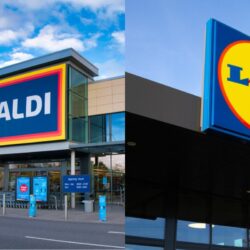The ability to target customers in real-time with personalised content, which enriches their experience with a brand, is rapidly becoming one of the top priorities that senior marketers – not just in the retail sector – are currently striving to achieve. But what do we really mean when we talk about real-time personalisation and how can brands realistically achieve it – even if they have the necessary data and insight required to meet the varying needs, requirements and desires of their segmented customer sets?
Personalisation is now considered a standard staple in any successful marketing campaign. Any brand worth their salt is investing in more enhanced data capture methods, widening their channel portfolio and looking to send out more relevant communications to a more demanding customer set. Whilst this is fine, is it really enough? The short answer is no.
With more brands using major events – from the birth of the Royal baby to last year‘s Superbowl blackout – as a marketing opportunity, it‘s now becoming more important to create rich and meaningful, personalised experiences in real-time from the moment a customer starts interacting with you. These experiences are defining the way customers think about brands and becoming more influential to their purchase decisions. If they have a great experience they‘ll shout about it, if they don‘t they are likely to be disengaged and flock to a competitor. If you give people an opportunity to change, it‘s more than likely that they will take it. For instance, since the seven-day switching scheme for bank accounts launched six months ago over 600,000 people have opted to change banks – most likely because of a bad experience. Retailers therefore need to recognise the possibilities which enriched, real-time personalisation can and will have in shaping the way customers shop in the months and years ahead.
For retailers, especially those whose business is built around an ecommerce platform, this is a potentially huge opportunity for growth. Personalised banners which are carefully created and pitched at each and every visitor from the moment they start browsing, immediately reward the customer for choosing to shop, and ultimately increase their propensity to buy. These can and should, where possible, extend to discount offers, offers on related products, alerts to “new in” products – for the fashion conscious customers – or simply be in direct response to customers‘ current or previous shopping behaviour. If these are pitched at the right moment shoppers will instantly feel valued and without question, become more loyal as a result. This content is essential for tapping into those key “moments of truth” in the purchase lifecycle, where shoppers can easily get distracted by a Facebook notification, Snapchat ping or news alert from the BBC – irrespective of the device they are using at the time. He who screams loudest will ultimately win out. Retailers need to be wary of this and understand they have a finite amount of time to win over their customers regardless of whether they are new or repeat.
For organisations like Hertz, the introduction of real-time offers has transformed the experience customers receive when renting a car. Customers can be sent details and even upgrade, on the move, from their mobile phone at the moment their flight touches down. Customer service staff are able to arbitrate between real-time offers to decide what offer is right for what customer, track how effective they are performing and adjust where necessary. This process ultimately enables businesses to balance multiple strategies and business objectives simultaneously at each touch point. Each business objective will likely encompass different message classes too, but this just enhances the personalised offer. At Hertz they can serve up tens of thousands of variants of offers instantly, meaning customers are always presented with a valuable prop
RELATED STORIES

















